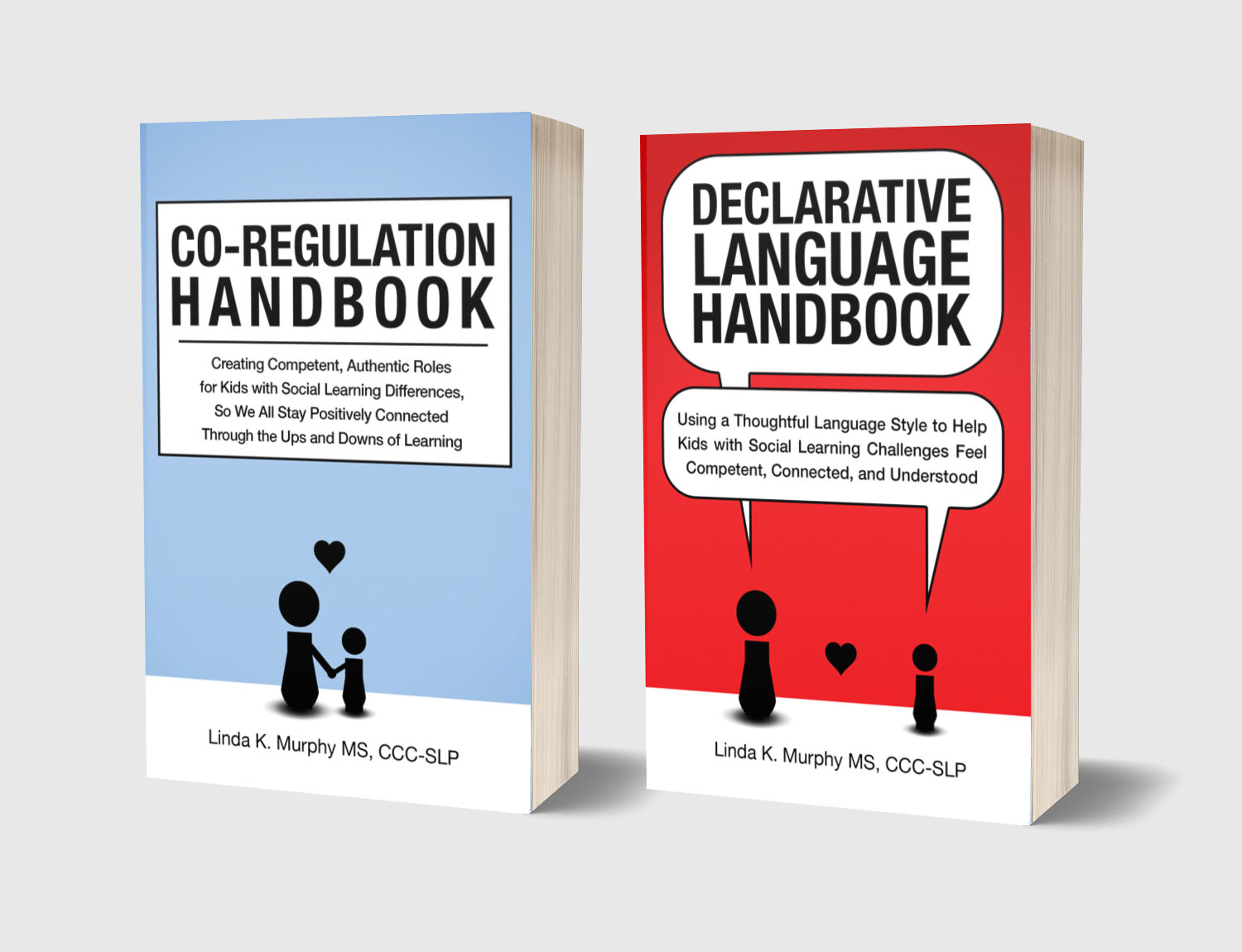Gasp Moments!
You may now remember Charlie and his mother, Kim, from previous posts (part 1 and part 2). I have written about how we use declarative language to help him manage his impulses and become aware of his own strengths and vulnerabilities.
Recently Charlie’s mother, Kim, and I found a way to help him identify the moment right before he has an impulse. This is everything! Because if we can help him independently recognize this important moment in real time, we can help him learn to pause at that point, and thoughtfully decide what to do next (rather than act on his impulse).
Using declarative language, Kim and I reflected with Charlie on a recent event in their home – the power went out unexpectedly. We recapped their shared episodic memories as they remembered together how Charlie panicked while his mind raced ahead, imagining all the ways the power outage would impact his routines. His panic led to a series of impulses.
While talking, we thought about and described to Charlie our own body language and internal feelings when 𝑤𝑒 panic, in efforts to help him to think about these in himself (this is called interoception, and is really important!). We came up with a name that captured these moments for all of us: “Gasp Moments.” And once these moments had a name, Kim and Charlie began to really notice how many he has each day. Some seem small, but they all have the same effect on him.
As Kim noticed and began naming these out loud in real time, she used declarative language such as, “Charlie, I think that was a gasp moment!” or “I just saw you have a gasp moment!” Charlie then began to recognize and name them as well: “Mommy - I had a gasp moment!” This recognition created the pause needed to help him not act on an impulse.
An amazing skill of Charlie's is his ability to visualize these complex ideas and find a way to map them out for himself. Above is a map of 𝐺𝑎𝑠𝑝 𝐻𝑖𝑔ℎ𝑤𝑎𝑦, created by Kim and Charlie, based on his ideas. It is part of a bigger map they have drawn called, 𝐼𝑚𝑝𝑢𝑙𝑠𝑒 𝐶𝑖𝑡𝑦. On 𝐺𝑎𝑠𝑝 𝐻𝑖𝑔ℎ𝑤𝑎𝑦, find the caution sign, 𝐷𝑒𝑒𝑝 𝐵𝑟𝑒𝑎𝑡ℎ 𝐿𝑎𝑛𝑒, 𝑃𝑎𝑢𝑠𝑒 𝑃𝑘𝑤𝑦 and 𝐵𝑟𝑎𝑖𝑛𝑠𝑡𝑜𝑟𝑚 𝐵𝑙𝑣𝑑. These are all strategies Kim and Charlie talk about, using declarative language, to help him manage tough moments.
This map illustrates not only how Charlie learns, but also how invested he is in his own learning journey.
Maybe you and your child could create your own Gasp City?
Have a great week!
And here are those earlier posts about Charlie again in case you are looking!
If you like my Sunday Snippets of Support, you can receive them directly to your inbox here.


